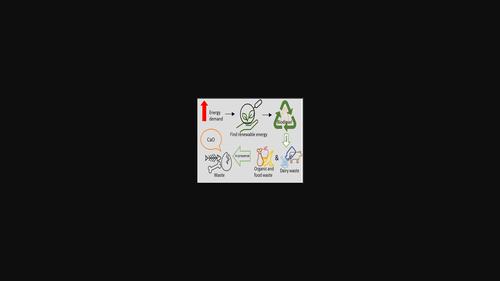当前位置:
X-MOL 学术
›
ChemBioEng Rev.
›
论文详情
Our official English website, www.x-mol.net, welcomes your feedback! (Note: you will need to create a separate account there.)
Utilization of Dairy Scum Waste as a Feedstock for Biodiesel Production via Different Heating Sources for Catalytic Transesterification
ChemBioEng Reviews ( IF 4.8 ) Pub Date : 2022-07-19 , DOI: 10.1002/cben.202200003 Siti Aminah Mohd Johari 1, 2 , Muhammad Ayoub 1, 2 , Abrar Inayat 3 , Sami Ullah 4 , Maliha Uroos 5 , Salman Raza Naqvi 6 , Sarah Farukkh 7
ChemBioEng Reviews ( IF 4.8 ) Pub Date : 2022-07-19 , DOI: 10.1002/cben.202200003 Siti Aminah Mohd Johari 1, 2 , Muhammad Ayoub 1, 2 , Abrar Inayat 3 , Sami Ullah 4 , Maliha Uroos 5 , Salman Raza Naqvi 6 , Sarah Farukkh 7
Affiliation

|
The increasing demand of the world energy consumption has made it necessary to shift energy technologies toward renewable energy sources. The sustainability of feedstock can be maintained when utilizing feedstock from waste sources, such as dairy waste, food waste, and others. Dairy waste is one of the cheapest sources available. The compositions of dairy waste scum, including free fatty acids (8–10 %), triglycerides (more than 80 % in dry bases), and fats around 60 %, which have the potential to be used as the feedstock for biodiesel production in the presence of certain catalysts. To ensure more sustainability, the catalyst should be derived from waste (e.g., eggshells and cow bones) that consists of calcium oxide, which can then be used to catalyze the transesterification of dairy waste. This review emphasizes the current production of dairy waste globally and the potential of the waste and other types of organic waste as feedstock for biodiesel production, as well as determines the optimum reaction conditions for high-quality biodiesel production.
中文翻译:

以乳渣废料为原料通过不同热源催化酯交换生产生物柴油
世界能源消费需求的增加使得有必要将能源技术转向可再生能源。当利用来自废弃物来源(例如乳制品废弃物、食品废弃物等)的原料时,可以保持原料的可持续性。乳制品废物是最便宜的来源之一。乳制品废渣的成分,包括游离脂肪酸(8-10%)、甘油三酯(以干基计超过 80%)和约 60% 的脂肪,这些成分有潜力用作生产生物柴油的原料某些催化剂的存在。为确保更具可持续性,催化剂应来自含有氧化钙的废物(例如蛋壳和牛骨),然后可将其用于催化乳制品废物的酯交换反应。
更新日期:2022-07-19
中文翻译:

以乳渣废料为原料通过不同热源催化酯交换生产生物柴油
世界能源消费需求的增加使得有必要将能源技术转向可再生能源。当利用来自废弃物来源(例如乳制品废弃物、食品废弃物等)的原料时,可以保持原料的可持续性。乳制品废物是最便宜的来源之一。乳制品废渣的成分,包括游离脂肪酸(8-10%)、甘油三酯(以干基计超过 80%)和约 60% 的脂肪,这些成分有潜力用作生产生物柴油的原料某些催化剂的存在。为确保更具可持续性,催化剂应来自含有氧化钙的废物(例如蛋壳和牛骨),然后可将其用于催化乳制品废物的酯交换反应。



























 京公网安备 11010802027423号
京公网安备 11010802027423号